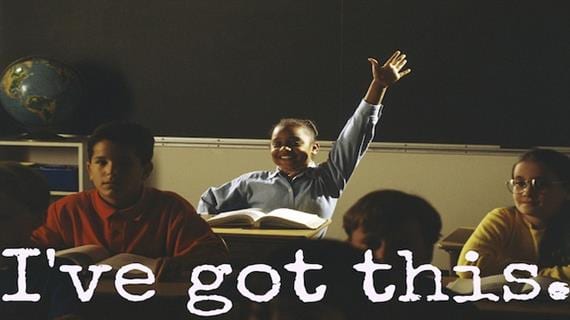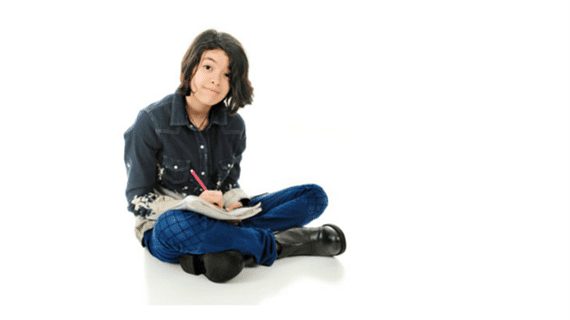We sometimes find ourselves in a culture of product-based praise. The A’s, the high test scores, the right answers: These are our educational celebrities. But we lose sight of the process, the effort, the risk it takes learners to achieve those great scores and grade point averages. In doing so, the message is sent: The product is worth more than the process. If we want more effort from our students, we need to be more intentional about the value of process and risk in our classrooms.
Unfortunately, many of us think, “Oh great, another set of lessons and plans I have to use in order to focus on effort. …” Au contraire. Fostering a culture of academic risk-taking doesn’t have to be a major classroom shift. We can cultivate risk-taking and effort like ninjas, focusing on process subtly with a few sweet, simple teacher moves.
Here are seven implicit moves for boosting academic risk-taking:
1. Mind Mining
It’s bad teaching to acknowledge a bad answer. We do a disservice when we praise wrong answers. So, rather than give that awkward “Yes … good effort …,” we can mine their minds to acknowledge their thought processes.
Ask students mining questions like “What led you to that answer?” or “Walk us through how you got to that idea.” In diving deeper, we not only unravel metacognition but also allow more authentic moments to praise the process (and correcting misconceptions). For example, “Terence, you did a great job connecting Gatsby’s personality to what you know about people in love. I don’t know if we can jump as far as to say he is a murderous lunatic … but you’ve helped us connect a character’s emotions to his behavior.”
2. Elaborate
If a student doesn’t have a correct answer, we can still get there while acknowledging the process as a learning group. Follow up a response with a “call to elaborate.” Open it to the class with questions like:
– Who can help us dive deeper?
– Who can add?
– Who can adjust this?
Acknowledge all contributors, including the student who got the ball rolling, with responses like “I love how we worked as a group to get a deep, accurate response here. Thank you, Brenda, for your risk in getting us started and thank you, Serrina and Kaysi, for taking your own risks to elaborate.”
3. Divergent Blast
Create a culture of risk taking by prepping a divergent blast. Tell the class, “When I say ‘blast,’ shout out all the solutions or ideas for our problem that you can. I’m going to collect as many as I can on the board. Don’t worry about right or wrong, just give your best effort. ‘Blast!'”
4. Think-Pair-Shares
Think-pair-shares are beautiful. Among the many benefits, they shift the ratio of work onto the students, they allow for a larger number of contributors, and they allow students to “try out” thoughts before posing them whole-group.
They are also one of the most effective strategies in cultivating effort and risk-taking. Think of the concept of inertia: Brains in motion tend to stay in motion. Brains at rest tend to stay at rest. Posing a pair-share gets students moving so that they are more likely to take the risk-sharing ideas in class.
Even if students don’t choose to share ideas after a pair-share, you can pull a teacher-ninja move: Eavesdrop on responses and then discuss whole-class. “In wandering around and creeping on your thoughts and answers, I overheard a group in the back corner talking about what part of the text is confusing. It was great to hear their honesty and they even pushed it further by bringing up the importance of context clues. After sending some air-fives to the back corner, let’s look again at what context clues can help us here.”
5. “What, So-What, Now-What” Acknowledgment
Useful for full-baked or half-baked responses from students, we help students link their efforts to positive results.
What – What you noticed, what a student said.
So what – Why their effort mattered, what traits they showed.
Now what? – What is their next step in growth, how their efforts/characters will help them in the future.
Examples:
“I’m noticing a lot of puzzled looks on your faces and quite a few raised hands. It’s great to see so many of you take the risk and ask questions when you’re confused; you are taking control of your learning. Always raise a hand when you are puzzled. In the meantime, take a moment to write down your questions/confusions. We’ll share with partners and see if we have similar challenges.”
“Can we take a moment and acknowledge table three? I just saw every one of them take out their notes when they couldn’t figure out problem two and talk about some solutions. Not only are they using their resources, but they are using one another for support. Trust me: Taking risks and asking your peers for support is something you’ll still need when you start adulting after high school.”
6. Pre-Briefing
Acknowledging after academic risk-taking is not our only hope for cultivating a culture of effort. We can also prepare students for upcoming challenges. This can be done whole-group or individually.
Whole-group example:
“We are about to dive into our lab. I have seen students struggle in the past getting their measurements right. But you’re next-level students. Use your patience and triple-check your measurements. If it’s still not working, send a representative to me and ask for support. You won’t give up because scientific thinkers are flexible and persistent.”
Individual example:
(Pulled aside from group) “Alright Kyle, today is when we draft our essays. I know in the past drafting hasn’t been your strength, but we change that today. When you get stuck, you are simpl y going to place this sticky note on the corner of your desk. I’ll check in with you. I also know you love to doodle along the margins to make it look like you’re writing. Not today. Today you upgrade because I’ve seen what you can do when you don’t quit on your writing.”
7. Model Mistakes
The best teachers I’ve ever known have all been humble: They admit their mistakes, they own the consequences and they make clear their own process of learning. Unfortunately, some teachers believe that “to err is to fail” as educators. In trying to present a perfect image as a thinker and teacher, we not only make ourselves less approachable by our students, we lose valuable modeling opportunities.
Whether it’s admitting a mistake in grading or giving directions or teaching content, owning our mistakes creates a huge shift in our classroom culture. But don’t simply say, “Oops, I messed that up. ” Clarify why you thought the way you did and how you will work to fix it. We don’t want students who will just admit mistakes. We want students who will own errors, understand why they happened and plan for repair. We are their best source of modeling, so own those errors!
Your turn. What are your favorite simple moves for encouraging academic risk-taking?

